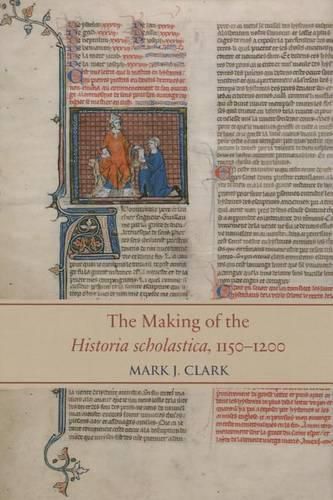Readings Newsletter
Become a Readings Member to make your shopping experience even easier.
Sign in or sign up for free!
You’re not far away from qualifying for FREE standard shipping within Australia
You’ve qualified for FREE standard shipping within Australia
The cart is loading…






In the theological landscape of the later twelfth and early thirteenth centuries, Peter Comestor’s Historia scholastica stands out as a conspicuous yet strangely overlooked landmark. Like the Sentences of Peter Lombard, the History towers over the early scholastic period, and it was the extraordinary success of these twin towers that ensured the joint ascendancy of the reputations of the two masters. Indeed, we find one medieval writer after another testifying to the greatness of the man whose nickname had become synonymous with a voracious appetite for knowledge, and the encyclopedic work whose extraordinary dissemination and influence over several centuries made it the medieval popular Bible.
Based on wide and insightful reading of the manuscripts and printed texts not only of Peter Comestor but also of his master, Peter Lombard, and his student, Stephen Langton, this study offers a persuasive new argument about the genesis and formation of the Historia scholastica. At the same time it harnesses new evidence from biblical glosses and from Langton’s lecture courses to analyze the development and reception of the History at Paris in the decades between the 1160s and the 1190s.
In the course of this analysis, the History is revealed as a living, prototypically scholastic text, changing constantly at the hands of the magistri who, in adding to and altering the text, readily and anonymously placed their stamp on Comestor’s masterwork even as they used it in their teaching. That the History proved so malleable is a testament to Comestor’s genius, for he invented a novel method for introducing the Bible to students. Unlike the Gloss, the History presented just the historical/literal tradition and did so in a format that offered students both the scriptural text and the tradition of literal glosses in a single, unified historical narrative. Additionally, Comestor chose a felicitous narrative structure for the History, organizing its chapters into discrete topics that could be easily adapted to a master’s individual courses. By reorganizing biblical history in cogent fashion, and by establishing the narrative coherence of the salvific events related in the Old and New Testaments, Comestor charted a course in scholastic biblical education that was as fresh as it was to prove durable.
$9.00 standard shipping within Australia
FREE standard shipping within Australia for orders over $100.00
Express & International shipping calculated at checkout
In the theological landscape of the later twelfth and early thirteenth centuries, Peter Comestor’s Historia scholastica stands out as a conspicuous yet strangely overlooked landmark. Like the Sentences of Peter Lombard, the History towers over the early scholastic period, and it was the extraordinary success of these twin towers that ensured the joint ascendancy of the reputations of the two masters. Indeed, we find one medieval writer after another testifying to the greatness of the man whose nickname had become synonymous with a voracious appetite for knowledge, and the encyclopedic work whose extraordinary dissemination and influence over several centuries made it the medieval popular Bible.
Based on wide and insightful reading of the manuscripts and printed texts not only of Peter Comestor but also of his master, Peter Lombard, and his student, Stephen Langton, this study offers a persuasive new argument about the genesis and formation of the Historia scholastica. At the same time it harnesses new evidence from biblical glosses and from Langton’s lecture courses to analyze the development and reception of the History at Paris in the decades between the 1160s and the 1190s.
In the course of this analysis, the History is revealed as a living, prototypically scholastic text, changing constantly at the hands of the magistri who, in adding to and altering the text, readily and anonymously placed their stamp on Comestor’s masterwork even as they used it in their teaching. That the History proved so malleable is a testament to Comestor’s genius, for he invented a novel method for introducing the Bible to students. Unlike the Gloss, the History presented just the historical/literal tradition and did so in a format that offered students both the scriptural text and the tradition of literal glosses in a single, unified historical narrative. Additionally, Comestor chose a felicitous narrative structure for the History, organizing its chapters into discrete topics that could be easily adapted to a master’s individual courses. By reorganizing biblical history in cogent fashion, and by establishing the narrative coherence of the salvific events related in the Old and New Testaments, Comestor charted a course in scholastic biblical education that was as fresh as it was to prove durable.